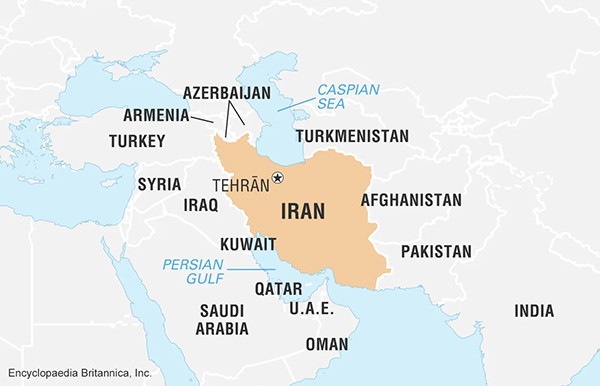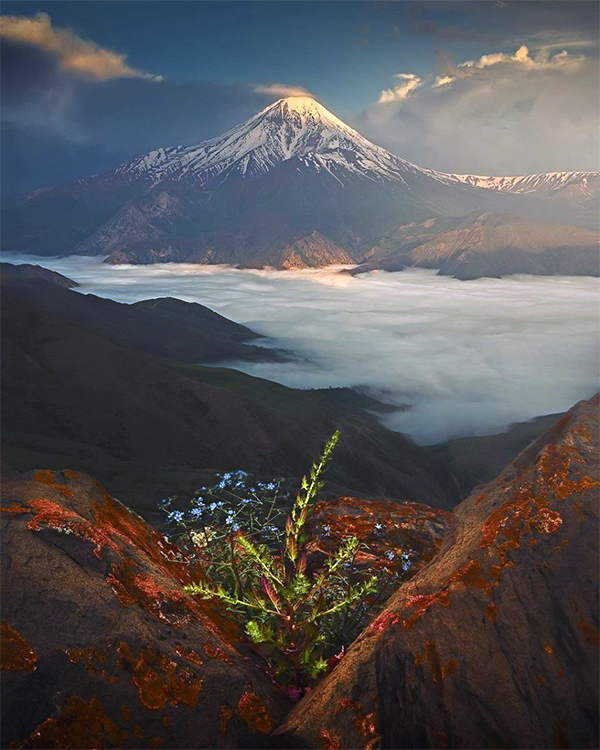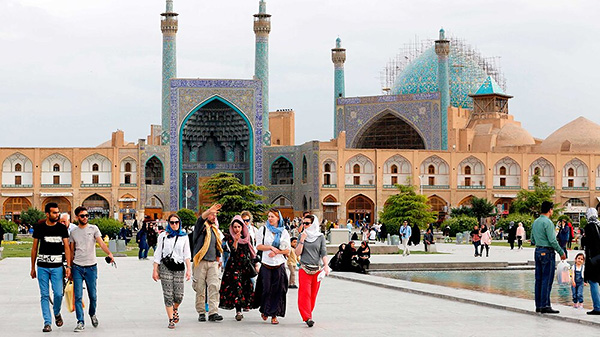IRAN
Iran covers 1,648,195 square kilometers of the world in southwestern Asia.
The strategic position of Iran, its vast resources, including petroleum, natural gas, and mines, its population amounting to about 85 million, and its unique culture, have made it a country of high caliber.
The history and geography of Iran have worked together, hand in hand, for its past, present, and future benefits. Although, because of those two factors, Iran has suffered from natural disasters and many invasions over time. However, with the combination of Yin and Yang, we live in the Land of Four Seasons and 26 UNESCO World Heritage sites.
As a summarized introduction, the northern coastal region with dense forest, southern coasts with mangrove forests, green and vast plains of Azerbaijan, deserts with their mysterious calmness and bright skies, lakes such as Urmia, Hammun, Parishan, and Zarivar, snow-clad mountains ranges of Alborz and Zagros are among the beauties of nature. In one season, in one month, or even in a week, you could experience various landscapes and climates in Iran.
Iran’s multifaceted climate varies from subtropical to subpolar. It is mild and humid in the Caspian Sea region and warm and humid on the southern shores. The north-western and northeastern areas are cold and dry, while the central part has a desert climate, hot and dry.
The heights of Zagros and Alborz have mild weather in summer. The Land of Four Seasons means one can go skiing in the northern mountains and swimming in the southern waters, or explore the desert, in the same season.
The Wildlife of Iran -as we have written about it thoroughly in our blog- includes leopards, bears, mouflons, ibexes, Persian zebras, and wild boars. Studies have revealed the presence of a noticeable wide variety of reptiles like crocodiles and turtles, and some 200 species of fish live in the Persian Gulf. Sturgeon is one of 30 species found in the Caspian Sea.
Iran is the cradle of human civilization. Historians say there are not many civilizations with a golden age in their mythology. A substance that enriches a nation and influences others, like Greece, China, and Iran. In the late 4th and early 3rd millennia BC, Elamite civilization rose in Khuzestan, in the South-west of the Iran Plateau. In the late 2nd millennia BC, the Aryans set foot on the plateau and named it Iran.
By the mid-9th century BC, two groups of Iranians rose to be the dominant force on the plateau: The Medes and the Persians. In 550 BC, the Achaemenid kings emerged on the international scene of history. The Parthian and Sassanid dynasties ruled Iran successively. In 625, the Arab armies cast aside the Sassanid dynasty, and the vast majority of Iranians, converted to Islam.
The Tahirid dynasty was the first independent Iranian Muslim dynasty established in Iran (821–873). The Saffarid dynasty, Samanids, and the Buyids also made remarkable attempts to make Iran proud. In 1216 the Mongol invasion ruined Iran and burnt it to the ground.
The Safavid dynasty (1501-1736) made the country whole after many centuries. They unified all of Iran and established a strong government, and Iran appeared on the international stage again.
The Afsharids and Zands were the dynasties that ruled Iran successively in the 18th century. In the 19th century, when the Qajar House took the throne, was when Iran lost one-third of its massive landmass. Many events, both internal and external, caused the once proud country to fall into decay. Iranians had enough of the dictatorship of Kings. They started a movement that brought them the Constitutional Revolution, the first election, and the foundation of Iran’s parliament.
In 1925, after the deposition of the last Qajar shah, Reza Shah shifted the sovereignty to himself. He became King and Iran moved toward modernization.
However, in the reign of Reza Shah and his son, Mohammad Reza Pahlavi, modernization, as much as it was needed, did cause some dissatisfaction among the religious populace and the Shiite clerics. Though Iran had a parliament with elected members, in the people’s eyes, it was the king who wore the crown.
The west was taking advantage of the Oil fields of Iran until Dr. Mohammad Mosaddegh, the prime minister at the time, nationalized the Iranian Oil industry. The West stopped supporting the last Shah and left him alone. The dictatorship raised uprisings against the Pahlavi family. It was the end of the Monarchy.
The 1979 Revolution changed everything in Iran, the newly founded regime faced eight years of a tragic war with Iraq, all because of the greed of a few powerful men. After that, it was time to build everything again, like how our ancestors built Iran after the Mongol invasion.
The long story told short of Iran, its nature, and its background is for you to know that you are not dealing with one tribe or only one epoch. We have many ethnic tribes, many cultures, and many languages as we are a collection of diverse and vastly different groups of people. There is much to explore about mythology, history, philosophy, science, literature and art, monuments and landscapes, people and cuisine, all under one flag, all under one name, Iran.









